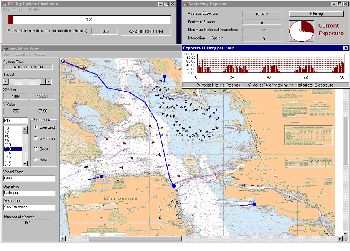Research
The PhD program is a result of the rapid growth in research producitivity in the Department of Statistical Sciences and Operations Research and the Department of Mathematics and Applied Mathematics.
These pages contain descriptions of current and past research projects, technical reports, and a link to the WikiSys, an internal wiki for students and faculty in the program.
Sensory Inputs and Fluctuations in Cortical Neural Networks
Faculty: Cheng Ly
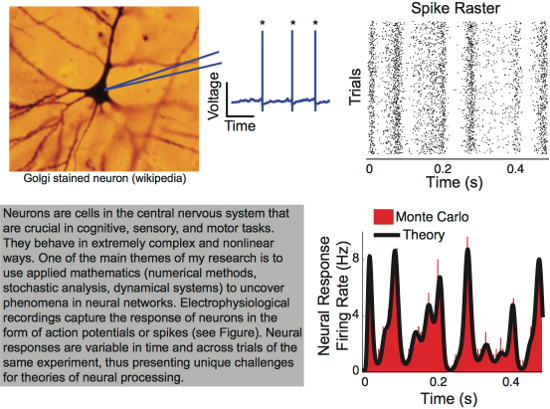
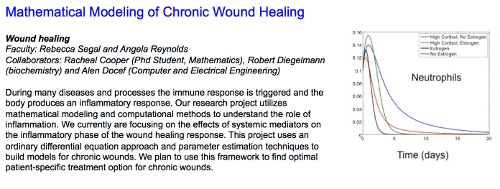
Structure-Exploiting Approaches for Solving Stochastic Programs
Faculty: Yongjia Song
Collaborators: Jim Luedtke (University of Wisconsin-Madison), Simge Kucukyavuz (The Ohio State University) We study structure-exploiting approaches for solving stochastic programs using a scenario-based formulation, which may come from the sample average approximation of the original stochastic program. In particular, we study chance-constrained combinatorial optimization problems and two-stage stochastic programs with fixed recourse. For chance-constrained combinatorial optimization problems, we propose a formulation in their original spaces, without using additional binary variables. This formulation could be strengthened by taking advantage of the particular problem structure, for example, the network structure or the packing structure. For two-stage stochastic programs with fixed recourse, we propose a finitely converging algorithm by adaptively adjusting the partition until it yields an optimal solution. A solution guided refinement strategy is developed to exploit the relaxation solution that corresponds to this partition. We conduct extensive computational study to demonstrate the effectiveness of proposed approaches on stochastic optimization problems with a large number of scenarios.

A Dynamic Approach to Linear Statistical Calibration with Applications to Microwave Radiometry
Ph.D. Student: Derick Rivers
Faculty Advisor: Ed Boone
This work funded by the National Aeronautics and Space Administration (NASA) and Jenkins Pre-doctoral Fellowship Project (JPFP) involves the development of a calibration algorithm that captures the dynamics of an earth-observing microwave radiometer. Calibration of these highly sensitive instruments is required due to the fact that the current electronic hardware is unable to maintain a stable I/O relationship because of random gain fluctuations. In this project I develop a Bayesian statistical calibration method that computes the posterior distributions for calibration temperatures that reflect a system that is changing due to random gain fluctuations. This model can be used perform calibration in the present of time-varying parameters.
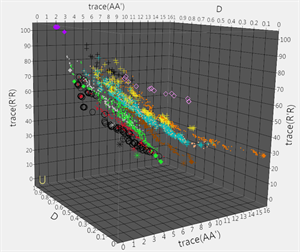
Simultaneously Optimized Follow-Up Designs
Ph.D. Student: Bob Leonard
Faculty Advisor: David Edwards
Optimal follow-up experimentation provides a useful way to augment an initial design when traditional follow-up approaches are not appropriate. When choosing a single criterion for which to optimize the combined design, practitioners often have to deal with tradeoffs. For example, choosing to optimize the D-criterion can help with precision of model parameter estimates but at the possible expense of model misspecification. Past studies have investigated comparing multiple criteria in order to incorporate multiple design objectives into a follow-up design, but only after optimizing a single criterion. The research investigates simultaneously optimizing multiple criteria as a viable alternative to forming follow-up designs. Practical uses of such designs are also investigated by comparing these methods to traditional fold-over techniques and single-criterion optimization approaches.
Multi-Scale Modeling of Ventilator-Induced Lung Injury
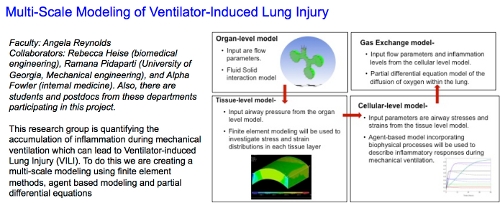
Pollen Dispersal
Faculty: David Chan
Collaborators: Rodney Dyer (VCU)
We are studying pollen movement through insect dispersal in dogwood at the VCU Rice Center for Environmental Research. In this project we are developing a variety of models and performing several experiments to better understand the behavior of insects in dispersing pollen. Gene movement within a plant population in a complex process and also critical for sustaining species in not only forests but also in agricultural and urban environments.
